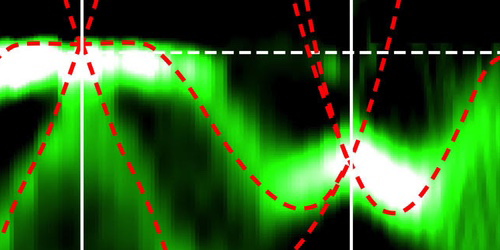New Quasiparticles Confirmed in Topological Material
New fermions are traditionally discovered in accelerators like Fermilab’s Tevatron, where signs of novel particles are sought in the subnuclear debris generated by highly energetic collisions. In recent years, however, investigations in condensed-matter systems have revealed fermion-like quasiparticles made up of collective excitations of electrons. These quasiparticles are absent in isolation yet are describable by the same equations as fundamental particles. Now, researchers have identified two more quasiparticles by studying the electronic structure of a crystal of cobalt silicide (CoSi).
Cobalt silicide is a topological semimetal, meaning that its conduction and valence bands join together at specific points. Electronic structure calculations predict that CoSi should host two such nodes, one at the crossing point of three energy bands and the other at the crossing point of four. It is these nodes that define the two predicted fermions, called a spin-1 chiral fermion and a double Weyl fermion, respectively. Takafumi Sato of Tohoku University in Japan and his colleagues confirmed the calculated band structure and the existence of the associated quasiparticles with angle-resolved photoemission spectroscopy, a technique that uses high-energy radiation from a synchrotron to probe the energy levels of electrons in a material. The measurements also identified Fermi arcs—features joining the surface projections of the two fermions in the bulk.
Other topological materials likely host additional undiscovered fermions, and theory predicts that higher-resolution experiments could reveal others in CoSi. As well as pursuing this possibility, Sato and his team plan further experiments to explore the physical properties of the spin-1 chiral and double Weyl fermions, such as how they interact with electric and magnetic fields.
This research is published in Physical Review Letters.
–Marric Stephens
Marric Stephens is a freelance science writer based in Bristol, UK.





